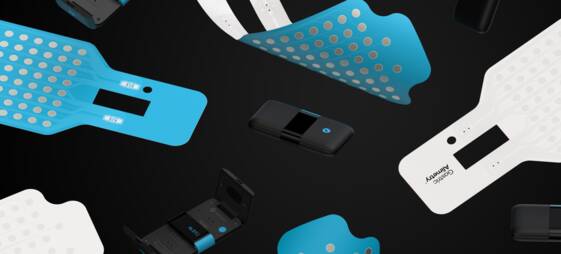The very best project in each discipline at the Best Design Awards is awarded the supreme, Purple Pin for work that truly raises the bar for New Zealand design.
Purple Pin Case Study — Product
Alimetry
Gastric Alimetry


Purple Pin 2021
Product: Gastric Alimetry
Studio: Alimetry
Judge's comments
An outstanding world class piece of design that deserves the recognition of a Purple Pin. The judges were deeply impressed by the elegant and sensitive integration of design and technology to create a game-changing medical tool. This is a tangible example of how New Zealand science, technology and design can working together to produce brilliant results.

Description
Gastric Alimetry is a wearable medical device for aiding informed diagnostics of gastric symptoms. A single non-invasive test conducted in the comfort of a clinic allows patients and clinicians to get answers within hours instead of months. It is positioned to transform the diagnostic pathway for millions of patients worldwide.
Design Challenge
Gastric Alimetry is based on advanced technology encompassing ten years of research and development at Auckland University. The core design challenge was to integrate a complex system into an intuitive product. The wearable device needed to be ergonomic, compact & durable. It had to be easy for the clinician to set up, apply, use, remove and clean, as well as comfortable for the patient to wear for several hours. The gastric mapping needed to be combined with the patient’s realtime symptoms, tracked via an app, uploaded to the cloud and compiled into an interactive report for diagnosis.
Design Solution
Gastric Alimetry is a lightweight, wireless medical device for aiding informed diagnostics of gastric dysfunction. A conformable patch of integrated electronic sensors is placed on the patient’s skin overlying the stomach. This detects gastric activity while patient symptoms are tracked via an intuitive app. Test data is sent to the cloud and processed using advanced algorithms, after which a detailed interactive report is generated for the clinician to inform patient care. From the conformable sensors to custom data visualisation, our approach was to put the user experience of both the clinician and the patient at the core of the system.

Design Impact
Gastric diagnostics are inefficient and inconclusive, creating frustration for clinicians and patients. Clinicians lack the tools to reliably diagnose gastric disorders and patients undergo laborious, invasive and expensive rounds of repeat testing, only to end up with inconclusive results, confusion and persistent symptoms. Gastric Alimetry is positioned to transform the diagnostic pathway for millions of patients worldwide suffering symptoms such as abdominal pain, bloating, reflux, nausea and vomiting. With a non-invasive, reliable, user friendly experience for both patients and clinicians, Gastric Alimetry provides answers. Clinicians are responding that it is emerging as a game-changing tool for evaluating gastric disorders.
Other Key Features
- The Array, a next generation hi-res 64 channel conformable electronic sensor patch, replaces dozens of cables and individual electrodes. We developed new tools to manufacture the array at scale, pushing screen-printed bioelectronics to the limit.
-The Reader, a recording device which clips onto the array, is designed for durability and serviceability. It connects to the iPad via bluetooth, charges wirelessly.
-The clinician facing iPad App guides optimal set up and cleaning.
-The patient facing iPad App tracks symptoms and uploads data to the cloud for processing.
-Test data is sent to the Alimetry Cloud and processed using advanced algorithms.
-The interactive report features a custom designed colour gradient map for optimal data visualisation.
-Gastric Alimetry achieved CE mark in March 2021 and is in a controlled market release.
-FDA and TGA approval are pending.
-The test offers novel biomarkers validated by deep science.